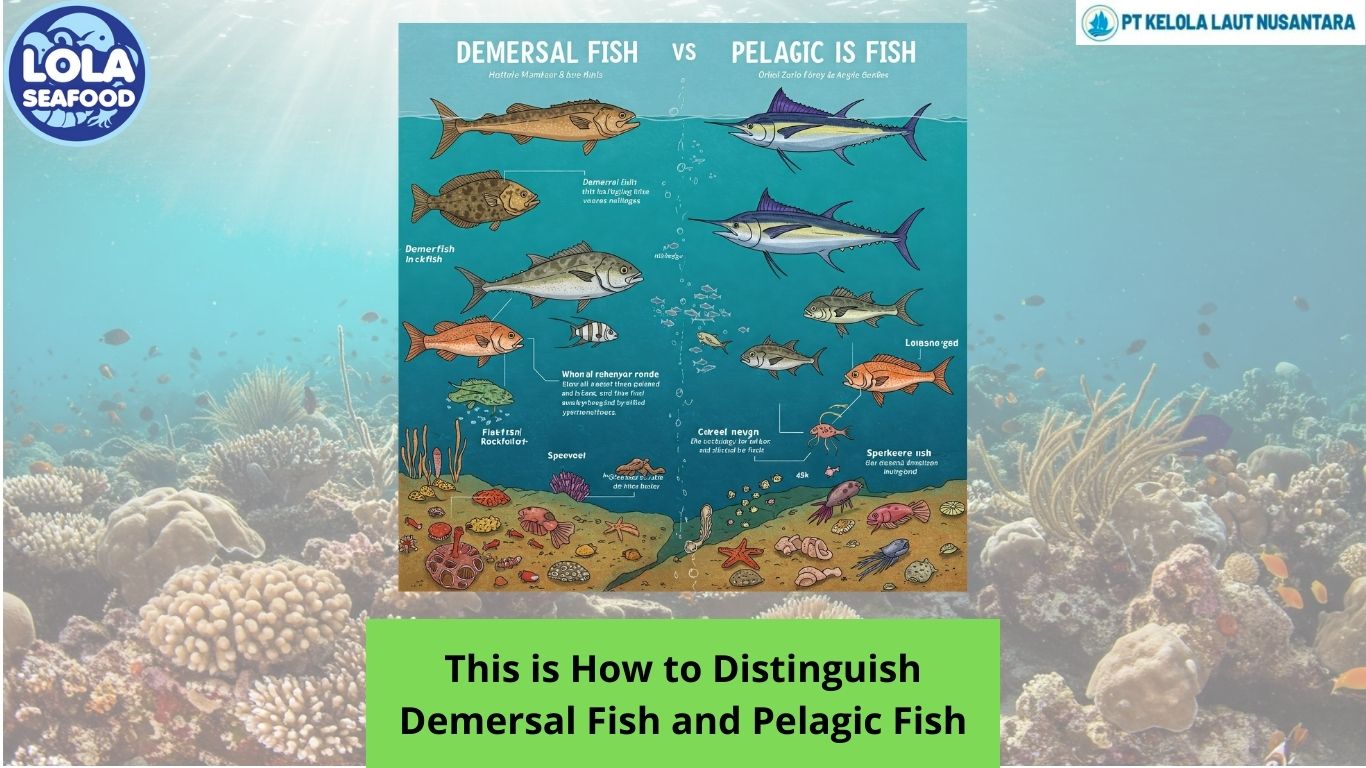This is How to Distinguish Demersal Fish and Pelagic Fish
By. Fajar - 16 Apr 2025
Kelolalaut.com In the world of fisheries, understanding the differences between demersal and pelagic fish is essential for sustainable fishing, proper processing, and making informed choices as a consumer. These two groups differ not only in where they live in the ocean, but also in their physical characteristics, diet, fishing methods used to catch them, and even their market value. Here's a breakdown of how to distinguish demersal fish from pelagic fish.
1. Habitat and Depth
The primary difference between demersal and pelagic fish lies in their habitat.
- Demersal fish live and feed on or near the seafloor. They are commonly found in coastal waters, continental shelves, and sometimes deep ocean basins. Examples include grouper, cod, flatfish, and snapper. These fish are closely associated with sandy, muddy, or rocky sea beds.
- Pelagic fish, on the other hand, inhabit the open water column, away from the bottom. They usually live in schools and swim at various depths, from the surface to the midwater. Examples include tuna, mackerel, sardines, and herring. These fish are more migratory, often traveling long distances.
2. Body Shape and Appearance
You can often identify the type of fish by looking at their physical traits.
- Demersal fish generally have a flatter or more robust body, adapted to bottom-dwelling. Some, like flounders, are laterally compressed to help them blend into the seabed. Their colouring is often muted or matches the ocean floor to camouflage from predators.
- Pelagic fish tend to have a streamlined, torpedo-shaped body built for speed and long-distance swimming. They often have shiny, silvery scales that reflect light, making them harder to spot in open waters.
3. Diet and Feeding Habits
Because they live in different parts of the ocean, their diets vary.
- Demersal fish feed on benthic organisms like crustaceans, molluscs, worms, and small bottom-dwelling fish. Their feeding habits are closely tied to the substrate of the ocean floor.
- Pelagic fish eat plankton, small fish, squid, and sometimes other pelagic species. Since they live in open waters, they are active hunters or filter feeders depending on the species.
4. Fishing Methods
The method of catching these fish differs due to their habitats.
- Demersal fish are usually caught with bottom trawls, longlines, or traps that operate near or on the seabed.
- Pelagic fish are caught using purse seines, drift nets, or midwater trawls, designed to capture fish swimming in schools in open water.
5. Market and Culinary Differences
Demersal fish are often considered premium seafood, favoured for their firm texture and rich flavour. They tend to fetch higher prices in local and export markets. Pelagic fish, while also popular, are often more abundant and used in bulk products like canned tuna, fishmeal, and frozen seafood products.
Understanding the differences between demersal and pelagic fish is more than just academic — it's essential for anyone involved in fishing, seafood processing, or simply making smarter choices at the market. From habitat and physical features to diet and market value, these two types of fish play very different but equally important roles in the marine ecosystem and the global seafood industry.
If you are intrested in our Goldband / Crimson Snapper Whole Round, Goldband / Crimson Snapper Fillet Skin On, White Snapper / Robinson Seabream / Seabream Whole Round / Whole Gilled Gutted Scaled, White Snapper / Robinson Seabream / Seabream Fillet Skin On, Snapper Whole Round / Whole Gilled Gutted Scaled, Red / Scarlet Snapper Fillet Portion, Red / Scarlet Snapper Fillet Skin On, Snapper Fillet Skinless please do not hesitate to contact us to email and / or whatsa
.jpg)
.jpg)
.jpg)
.jpg)
.jpg)
.jpg)
.jpg)
.jpg)
.jpg)